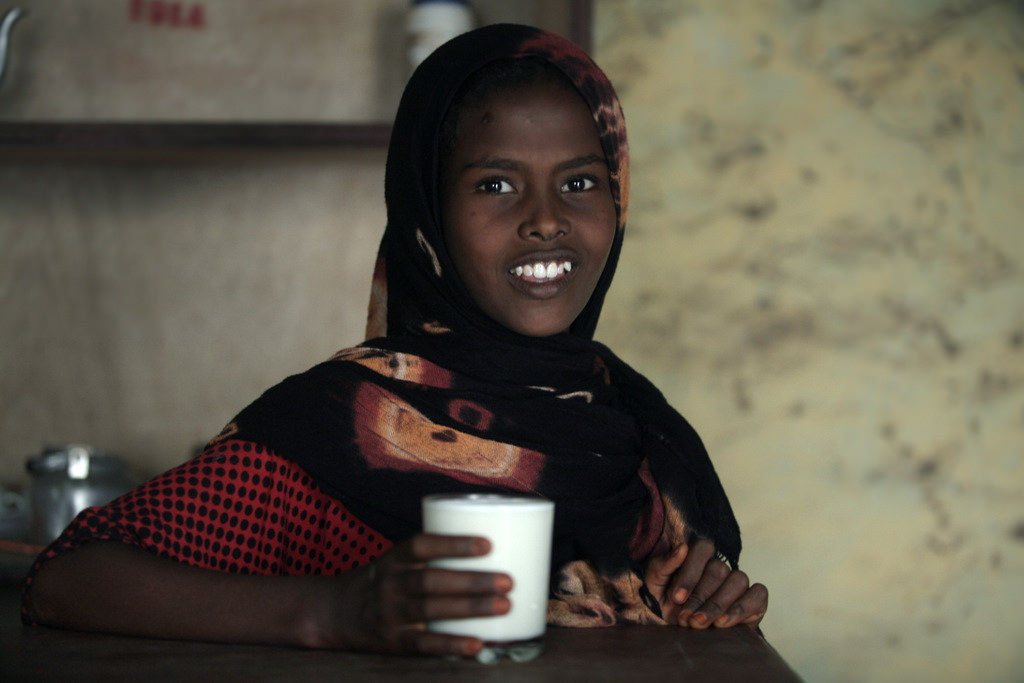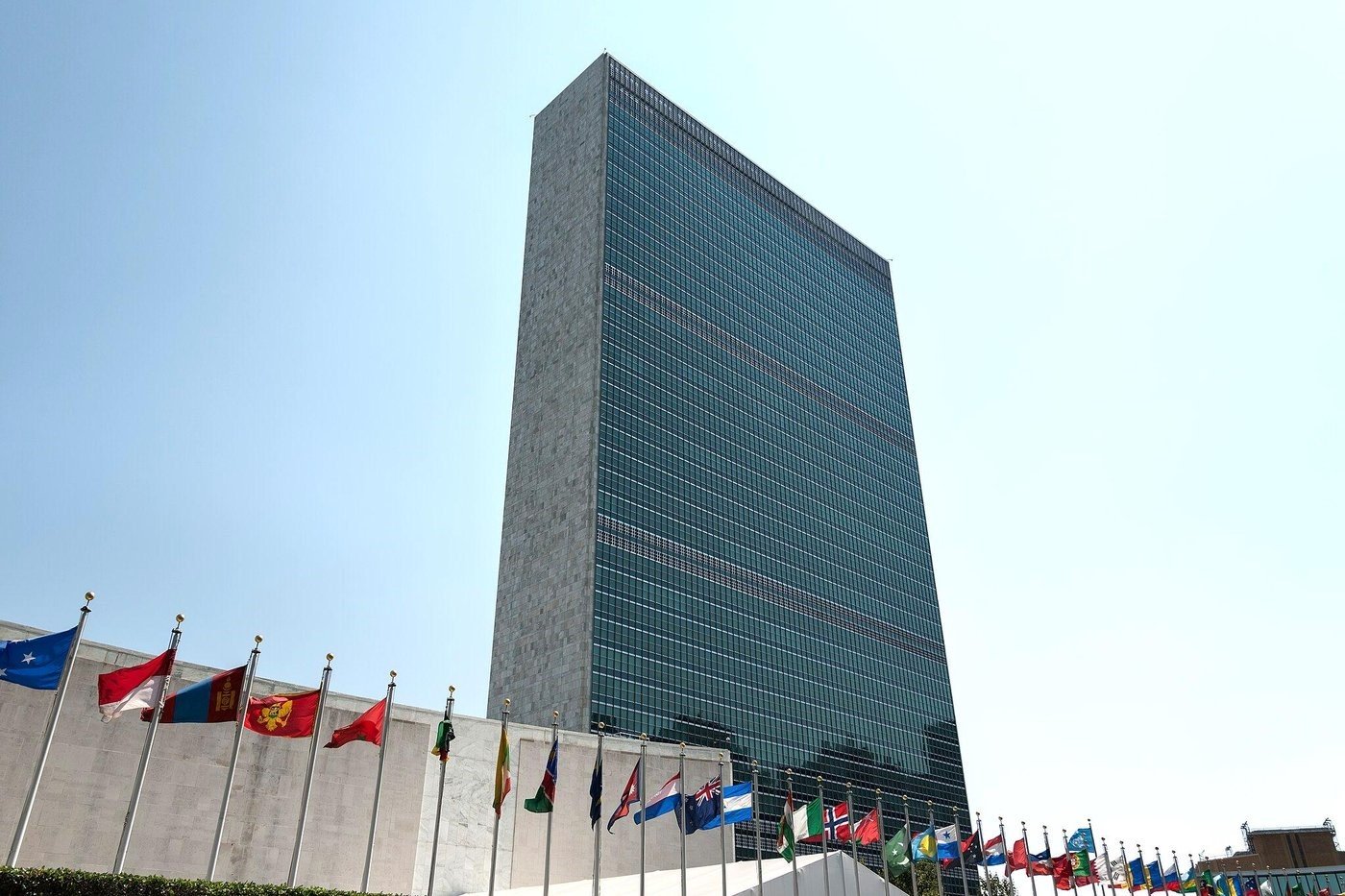With a focus on transformation, universality and interconnectedness, combined with an ambition to tackle root causes, SDG2 encapsulates the vision driving the whole 2030 Agenda on Sustainable Development
Consider the achievement for humankind. Wiping the scourge of hunger from the planet, defeating the menace of malnutrition, doubling the productivity and incomes of small-scale food producers, and helping the poorest of the poor to escape poverty. A formidable ambition, but thanks to the comprehensive vision of Sustainable Development Goal 2 (SDG2), and a commitment to revolutionize our food systems, ending world hunger by 2030 is possible – if we can join forces and secure the political will to act.
While the proportion of undernourished people almost halved in the period of the Millennium Development Goals, environmental sustainability was barely addressed. To give an example, in the final quarter of the 20th century the Green Revolution boosted cereal yields in South Asia by more than 50 percent. Impressive medicine but the use of high-yielding varieties, irrigation and high levels of chemical inputs were not without their side effects. Today, globally, more than two-thirds of land is to some degree degraded, up to 75 percent of crop genetic diversity has been lost and 22 percent of animal breeds are at risk. Almost 30 percent of fish stocks are overfished, and from 2000-10 some 13 million hectares of forests were converted into other land uses each year.
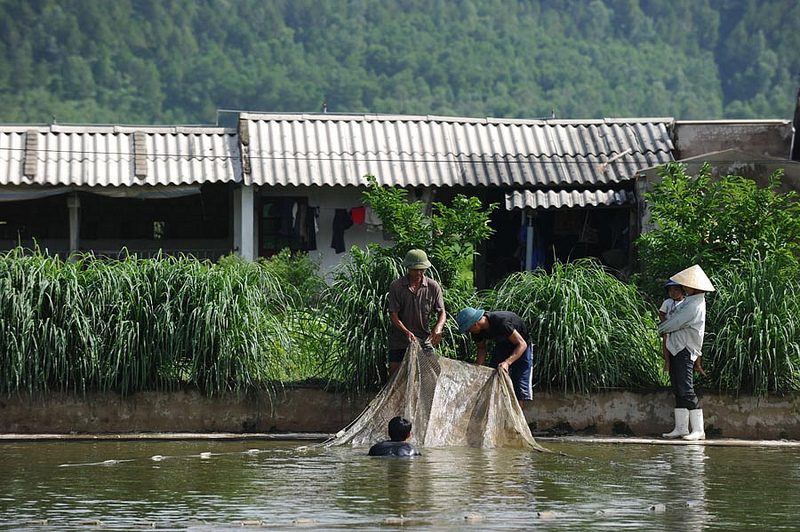
People who are well nourished live, learn and work longer, and contribute to achieving their societies’ aspirations for inclusive economic growth, human development, environmental health and innovation. Reaching zero hunger by 2030 will mean that we achieve a great many targets of the SDGs.
Feeding the World
When decision-makers sat down three years ago to discuss a successor global development framework to follow on the Millennium Development Goals, chief among the great challenges the world faced was how to feed almost 800 million hungry today and a growing global population projected to rise from 7.3 billion to 9.5 billion by 2050. This for a planet experiencing increasing water and land scarcity, soil and land degradation, a deteriorating natural resource base and more frequent weather events and episodes of food price volatility.
Today there is a new challenge; not just to address food security by increasing crop yield but also to attain nutrition security. Nutrition security involves paying concurrent attention to undernutrition (not eating calories), protein hunger and hidden hunger arising from inadequate consumption of iron, iodine, zinc, Vitamin A, Vitamin B12, and other micronutrients. It also involves access to clean drinking water, sanitation, primary healthcare and nutrition literacy.
– MS Swaminathan, Indian geneticist, renowned for his leading role in India’s Green Revolution programme
To feed another two billion people in 2050, food production will need to increase by 60 percent globally and to nearly double in developing countries. As was made clear at the Paris Agreement on Climate Change adopted in December 2015, the situation is complicated further by the impacts of climate change on agriculture, the world’s single largest employer.
Largely through SDG2, the 2030 Agenda rises to the challenge of nourishing people while nurturing the planet.
The vision starts with a call to end hunger, then goes deeper to offer a comprehensive and integrated vision for food security, nutrition and sustainable agriculture, the sustainable management of natural resources, and the protection of genetic resources.
Targets for SDG2 address the crucial access dimension of food security, all forms of malnutrition, the productivity and incomes of small-scale food producers, resilience of food production systems and the sustainable use of biodiversity and genetic resources. Demonstrating how food and all the agricultural sectors cut across the 2030 Agenda, various targets under SDGs 1, 5, 6, 12, 14 and 15 specifically address rural poverty, land tenure, water resources governance, food losses and waste, oceans and aquatic resources, forests, mountains, biodiversity and land and soils.
Related article: “ZERO HUNGER GENERATION: THE ROAD IS PAVED” by Laurent Thomas
While moving the world forward onto a sustainable keel, SDG2 aims to ensure that no one is left behind. Subsistence Family farmers in some rural areas of developing countries, especially in Sub-Saharan Africa and the Southeast Asia, are the most marginalised and the most threatened by disasters and by the changing climate. They grow food but not enough to avoid hunger. At the same time, more than 80 percent of the world’s food come from small-scale food producers.
Family farmers and small-scale food producers in general also make up the largest group of natural resource managers on earth. Their daily management decisions are key to global food security and to the health of the world’s ecosystems.
A United Goal
Inspired by the UN Secretary-General’s Zero Hunger Challenge and supported by the UN Rome-based agencies – the Food and Agriculture Organization (FAO), the International Fund for Agricultural Development (IFAD) and the World Food Programme (WFP), SDG2 is built on the latest science and evidence gathered from thousands of experienced experts on the ground working daily with hungry and poor people, with countries, with civil society and with others. It chimes with the main themes associated with the SDGs, balances attention to people and to the planet, envelops all three dimensions of sustainability – social, economic and environmental – and relates to the other goals of the 2030 Agenda.
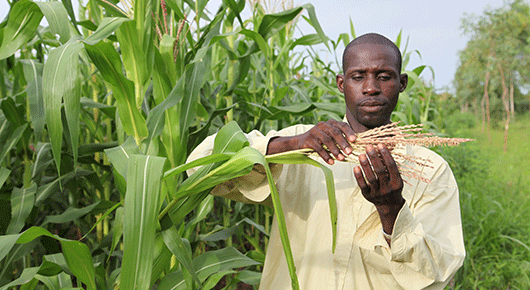 Siaka Dioni (Bla, Mali), a farmer field school facilitator.
Siaka Dioni (Bla, Mali), a farmer field school facilitator.
Since participating in a farmer field school, I now have a precise understanding of how a plant grows and how a field can be properly managed. I can now advise people and have built a wider network than I had before.
Siaka has tripled his income by increasing production and purchasing fewer pesticides. With some of his profits, he bought two motorcycles that allow him to travel faster between his fields. With his diversified cropping system, Siaka can provide better nutrition for himself and his family, and has a higher chance of obtaining a good harvest in spite of the climatic challenges.
Farmer field schools are part of FAO’s Integrated Production and Pest Management, a multi-donor initiative that aims to improve farming skills, and raise smallholder farmers’ awareness of alternatives to toxic chemicals.
Indeed, all 17 SDGs are very much interconnected. Ties between SDG1, End poverty, and SDG2 are particularly strong. Almost 80 percent of the world’s poor live in rural areas, where people depend directly or indirectly on agriculture, fisheries or forestry as a source of income and food. We also know that agricultural growth in low-income and agrarian economies is twice as effective in reducing hunger and poverty as growth in other sectors.
And to right a common misconception, hunger today is not caused by a lack of supply but because hundreds of millions of people simply cannot afford to buy enough food. That is exactly why rural poverty reduction has a central role to play in the fight against hunger.
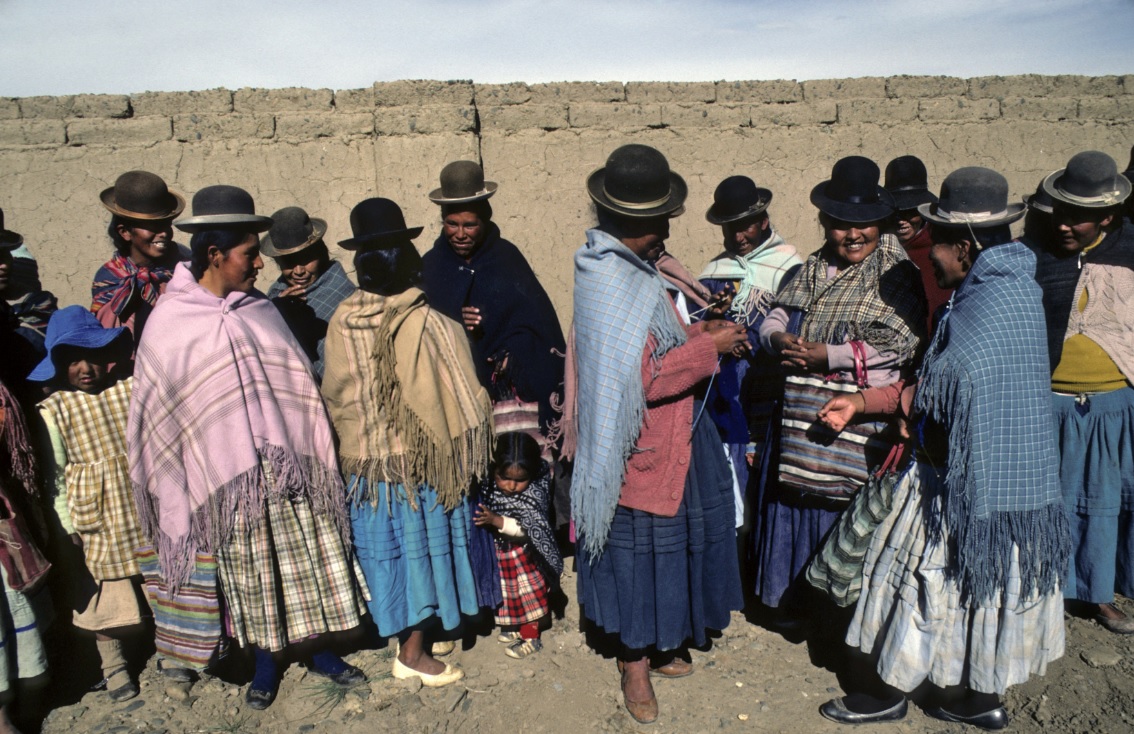 Ruth Taboada, a farmer and mother in Pocoata Potosi, Bolivia:
Ruth Taboada, a farmer and mother in Pocoata Potosi, Bolivia:
Conditions here are harsh. The cold makes growing crops really difficult. We were struggling – you could never be sure how much you would grow or sell. But things have changed with the school food law. Now I have a buyer for my produce, my children go to school and will be educated properly, and they come home well fed with full stomachs. The whole community has become much healthier with conditions improving all the time
In many countries, stunting and malnutrition prevent children from going to school, depriving them of a better future. In 2014, FAO supported the Bolivian government to develop a school food law that secures the right to food for its people. The programme combines education, health and sustainable agricultural production objectives.
How can we go about achieving SDG2 targets? The good news is that much of the SDG2 vision is already being put into action. Strengthened by a new strategic framework, FAO is working with countries, other UN agencies and partners in projects based on three-dimensional sustainability.
From backing school food legislation in Bolivia (SDGs 1, 2, 3 and 4) to helping to boost Georgia’s export trade in fisheries and to supporting policy-making (SDGs 1, 2, 3, 8, 10, 14, 17) to investing in dairy production in Kenya to improve nutrition, increase income and cut carbon emissions (SDGs 1, 2, 3, 5, 13, 15), FAO’s work goes far beyond SDG2, illustrating the broad impact of food and agriculture and just how interdependent the 2030 Agenda really is.
For a full mindmap behind this article with articles, videos, and documents see #SDGstories
More with Less
FAO has developed a number of approaches aimed at producing more with less; that is greater yield with fewer inputs. Of course, no magic seed exists to improve the environmental performance of agriculture for all landscapes in all regions, but the techniques do have several elements in common: knowledge-sharing and capacity building, better harnessing ecosystem services, good governance and coherence across different agriculture sections, conservation and sustainable use.
One model developed by FAO, Save and Grow, uses an ecosystem approach to intensify crop production that enhances both productivity and sustainability, builds resilience to climate change and reduces greenhouse gas emissions. Save and Grow promotes farming systems based on conservation agriculture practices, the use of good seed of high-yielding adapted varieties, integrated pest management, plant nutrition based on healthy soils, efficient water management, and the integration of crops, pastures, trees and livestock, areas that embrace multiple goals of the 2030 Agenda.
But if determining the ‘what’ (content) of the SDGs was hard enough, the ‘how’ (implementation) is expected to be a monumental challenge.
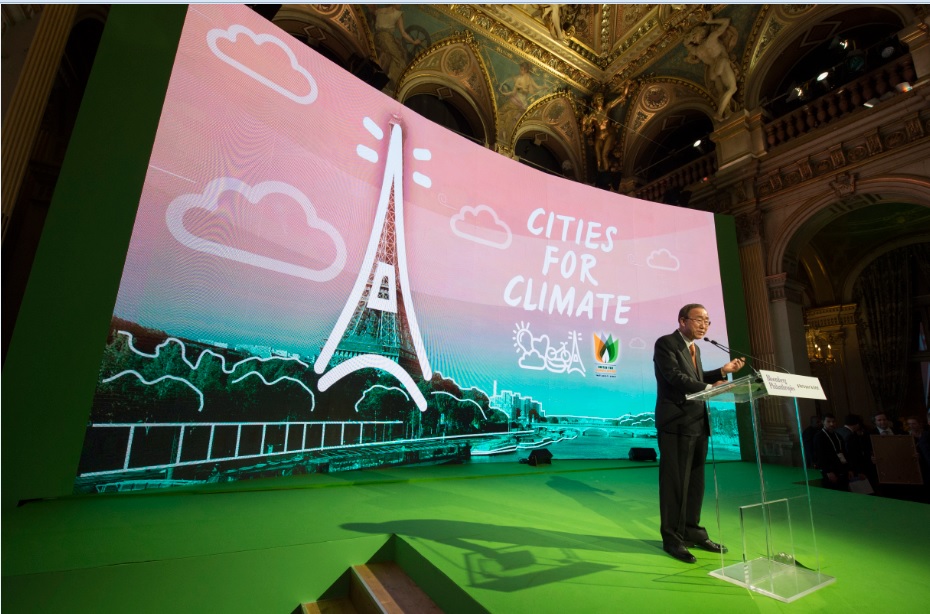
In the photo: Secretary-General Addresses Climate Summit for Local Leaders, Paris – Secretary-General Ban Ki-moon addresses the closing of the Climate Summit for Local Leaders, which took place on the margins of the UN Climate Change Conference in Paris (COP21) – Photo Credit UN Photo/Eskinder Debebe
The 2030 Agenda is defined not only by the outcome of the September 2015 SDG Summit, but also by the July 2015 Addis Ababa Action Agenda that showed the way to finance it, and the December 2015 Paris Climate Change Agreement that called for worldwide collaboration to fight the most threatening challenge to humanity’s survival, global warming.
What is clear is that the great ambition of the 2030 Agenda can only be realized through partnerships and accountability.
Firstly, by enabling partnerships that embrace both the private and public sectors in finance and investment, trade and market access, access to technology and capacity development.
One big step forward was taken in April when FAO and Google joined forces to make high-resolution satellite data an everyday tool in managing the world’s natural resources. This new partnership shows how technical expertise combined with innovative technology is changing the way the world goes about pursuing sustainable development.
And secondly, through accountability, supporting a massively expanded global framework for collecting data and tracking commitments. A sound indicator framework will turn the SDGs and their targets into a management tool to help countries develop policies and allocate resources.
Of the 230 SDG indicators agreed, FAO is the proposed “custodian” for monitoring 20 and a contributing agency for another five, relating to targets under SDGs 1, 2, 5, 6, 12, 14 and 15, including the majority of SDG2 targets.
Poniso Mondandi from Makalanguza village, a beneficiary of Zambia’s Social Cash Transfer (SCT) Programme.
Without help, I wouldn’t have been able to open my small shop where I sell home-made bread buns, hats and dried vegetables. I wouldn’t have hired somebody to work on my farm or sent my grandchildren to school.
Aimed at reducing extreme poverty, the programme has already reached 150,000 households across 50 districts.
Results from the impact evaluation carried out by FAO, the United Nations Children’s Fund (UNICEF) and the American Institutes for Research show the programme to have positive impacts: increased food security, improved child wellbeing, improved living conditions and increased productivity and ownership of productive assets.
Generation Zero Hunger
Ultimately, political will is fundamental to achieving zero hunger, or indeed any of the SDGs. Social protection systems open the door to a thriving economy and fairer society. They accelerate the transition from protection to production by supporting small-scale producers, particularly rural women, and by providing income generation opportunities. At the same time, they promote sustainable food systems, and improve natural resource management.
The 2030 Agenda recognizes that we can no longer look at food, livelihoods and the management of natural resources separately. A focus on rural development and investment in agriculture – crops, livestock, forestry, fisheries and aquaculture – are powerful tools to end poverty and hunger, and bring about sustainable development.
Achieving SDG2 will need commitments, sacrifices and behavior changes from all of us, but by working together, we can make history and become the Zero Hunger generation.
_


